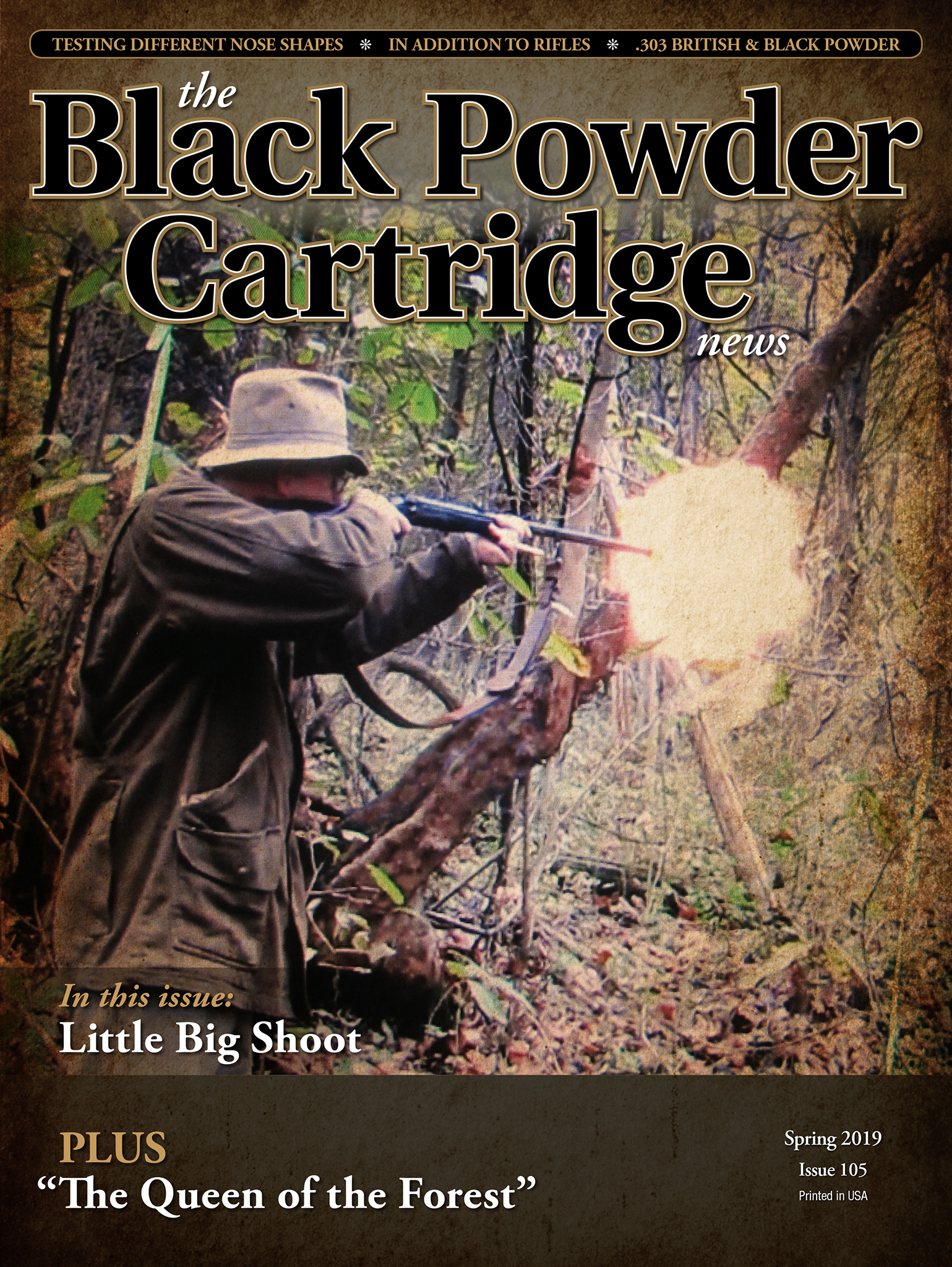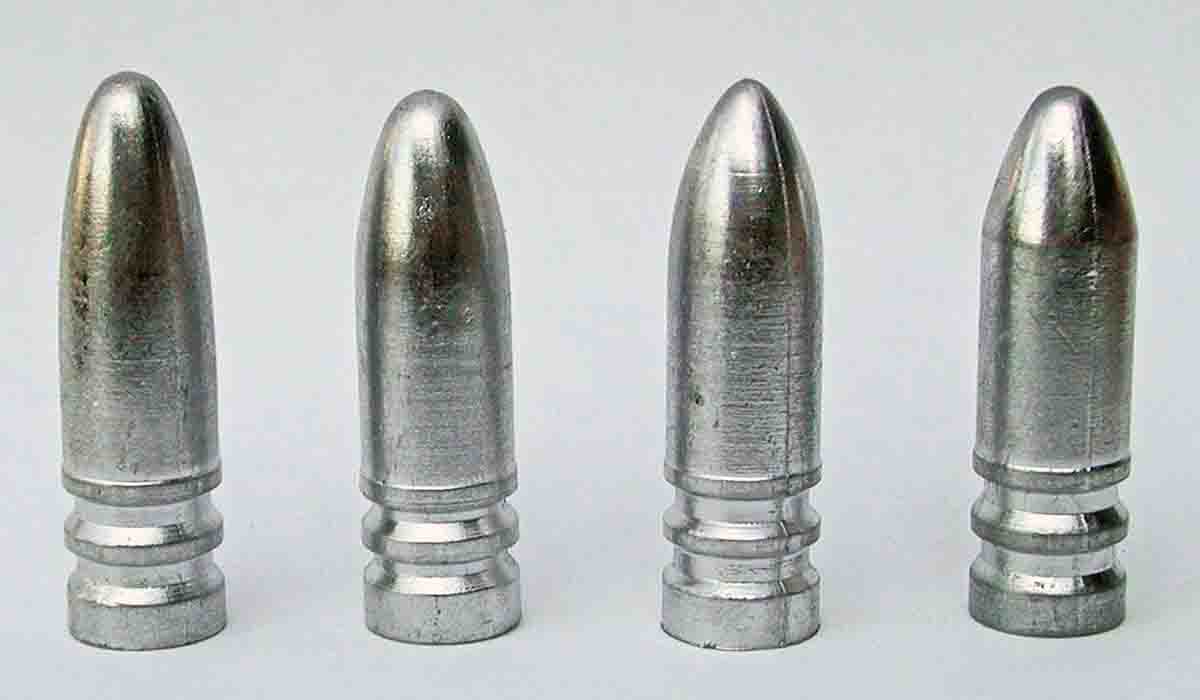
Cast bullets shown in firing order (left to right): Dan Theodore elliptical-nose bullet, 417 grains; New Postel, 417 grains; Pointed “Turkey Killer,” 421 grains; “No Slump,” 420 grains.
Last spring was the first time I heard about the LabRadar chronograph (myLabRadar.com). It is a ballistic doppler radar that will read a bullet’s velocity every 25 yards from the muzzle out to 125 yards. I showed it to Gayle and said, “If we were still shooting, I sure would have one of these.” Well, guess what showed up for my 66th birthday? Being “computer challenged,” it took a few trips to the range and some calls to the manufacturer to learn how to run it successfully. But, I endeavored to persevere, and I did! The LabRadar technicians were very understanding and helpful.
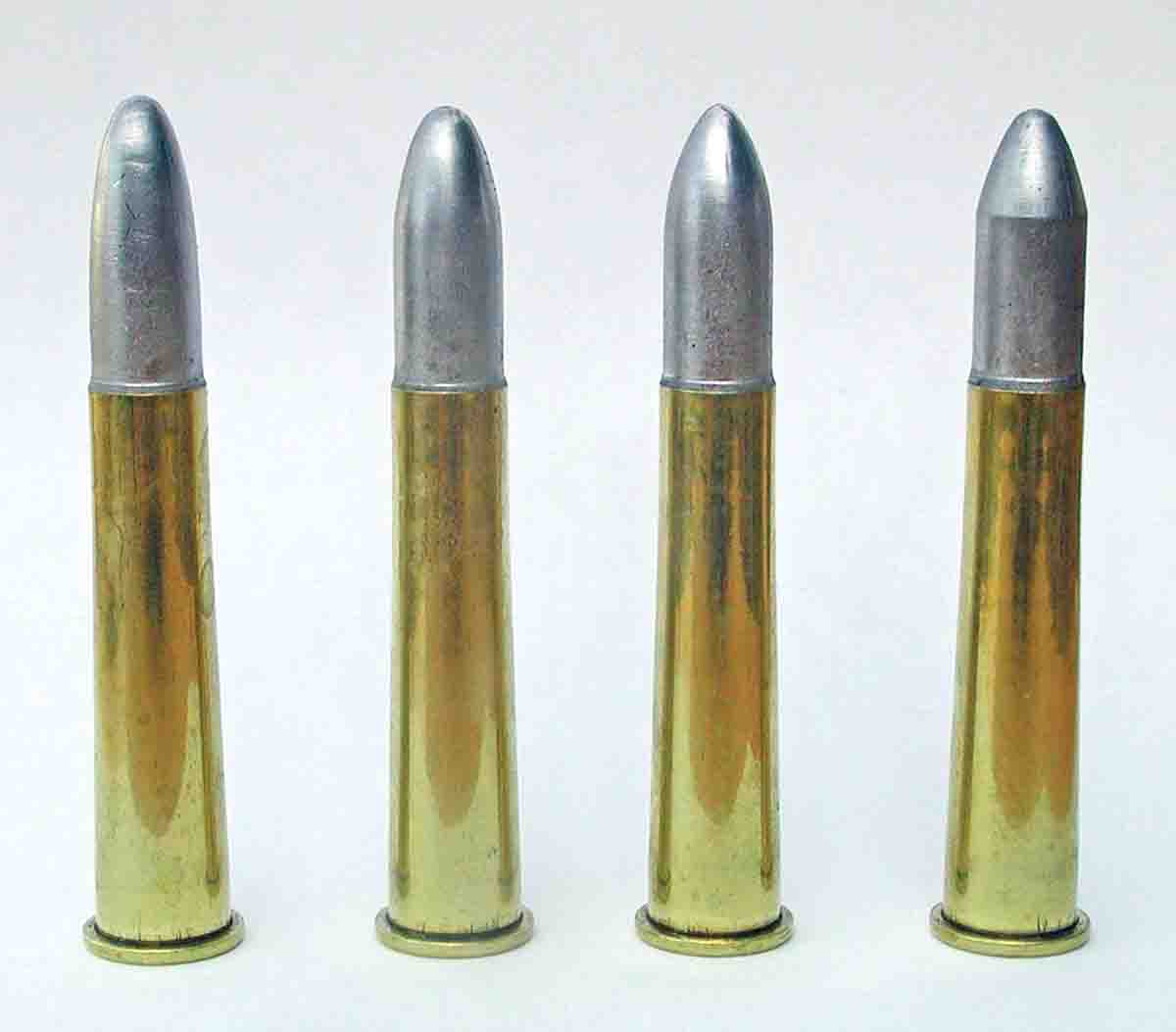
These .40-65 cartridges were used for testing in firing order (left to right): Dan Theodore elliptical-nose with .200 long bore ride (.399), .800 of unsupported nose; New Postel with .460 long bore ride (.399); Pointed “Turkey Killer” with .430 long bore ride (.399); “No Slump” with .580 long bore ride (.399).
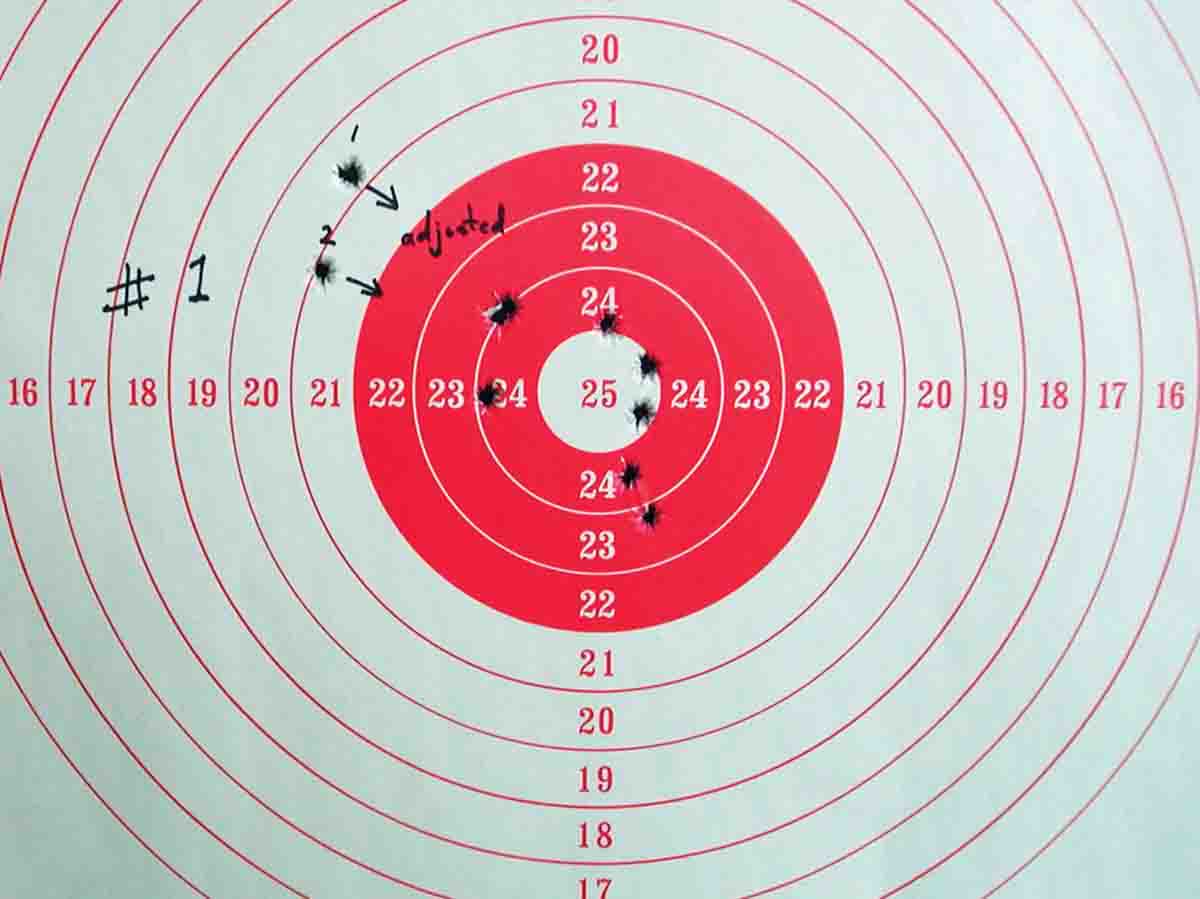
The Dan Theodore elliptical-nose bullet produced this group.
I rummaged through my mould stash and found four different bullets that were close to the same weight and had very similar grease grooves and seating depths. The only real
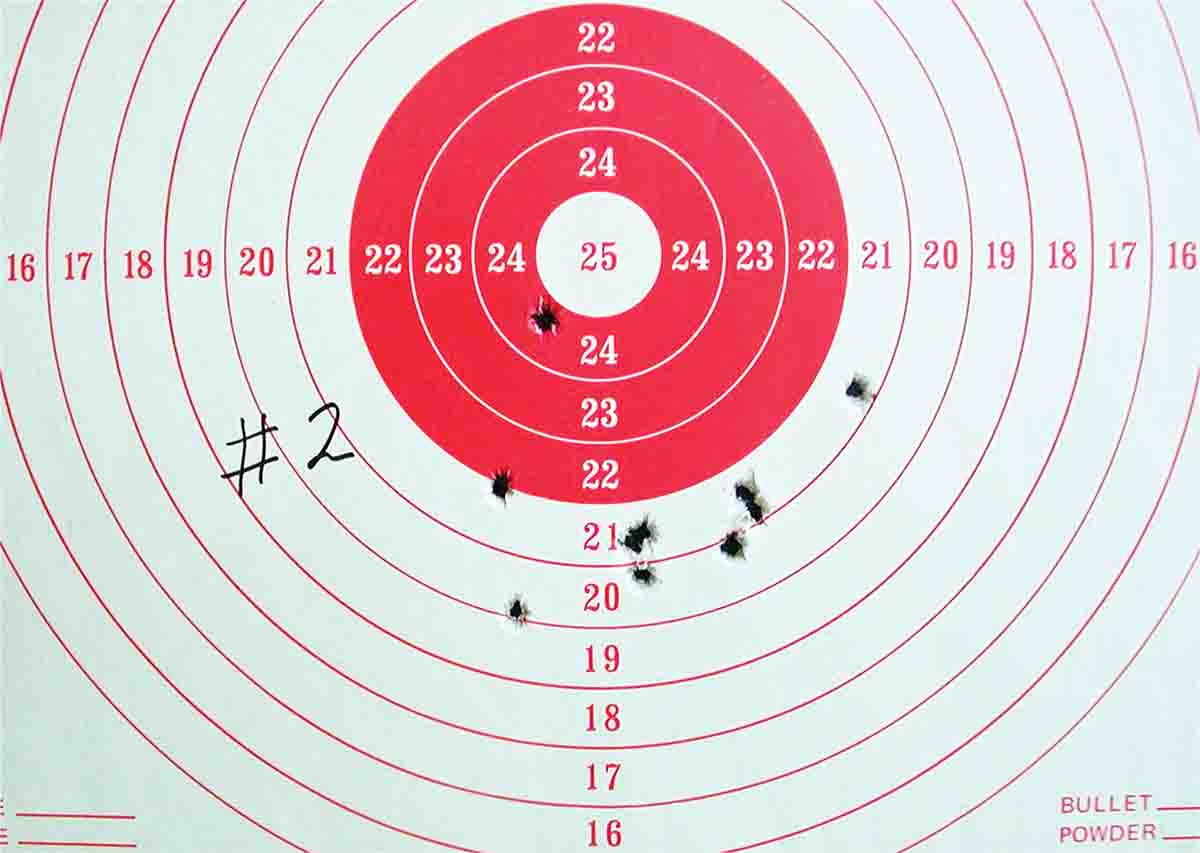
The New Postel bullet provided this 10-shot group.
difference was the nose shape. I loaded them all with the same components and headed for the range. It was an almost perfect testing day with very mild 5-mph winds from 4 to 5 o’clock. I shot 10-shot groups from a benchrest at 200 yards, starting with what looked like the bullet with the best ballistic coefficient and going through to the worst. I shot four foulers before I went for record and adjusted the scope after the first two shots on target No. 1. A blow tube was used between shots and 44 rounds were fired without cleaning; this was how I used to shoot matches. After the first two shots on target No. 1, I adjusted the scope and had it pretty well sighted on the 25 ring. I left elevation the same for target Nos. 2 and No. 3, but had to move up after the first shot on target No. 4 so the group didn’t fall off the bottom of the target. The differences in average bullet velocity among the four 125-yard targets were as follows: targets 1/2, 7 fps; targets 2/3, 12 fps; targets 3/4, 7 fps; targets 1/4, 26 fps (moved the point of impact 6.5 inches at 200 yards).
The rifle was a Shiloh No. 1 Sporter .40-65 that was used to win the BPCR Silhouette Nationals in 1998, the Nationals in 2001 and placed second overall in 2000 and 2002. Needless to say, it is a proven performer.
Test Results
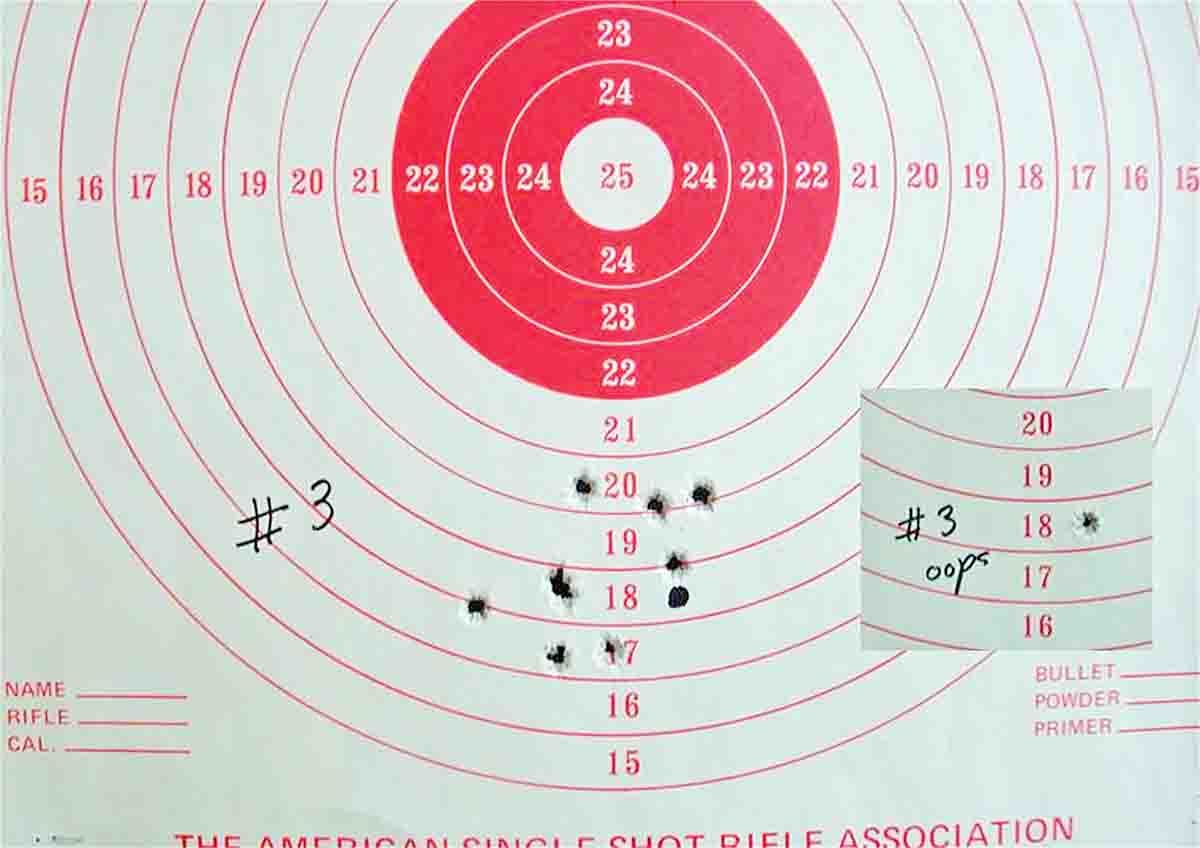
The cartridge loaded with the Pointed “Turkey Killer” bullet delivered this group.
Gayle and I have shot thousands of rounds over a chronograph with her spotting and numbering the shots on paper. We have never found that the slower shots hit at the bottom of the group. In this test, individual groups all had extreme velocity spreads over 8 fps and the groups are all about 2 minutes of angle (MOA) in size. The difference in the average fps between the groups was from 7 to 12 fps, and that moved the groups 1 to 2 MOA on the target. The target No. 2 group is the largest group and had the poorest standard deviation and extreme spread. It also has the best core group if you throw out two shots. It may be that standard deviation is more important to group size than I had thought.
I’ve had these moulds for more than seven years and this is the first time bullets were shot from target Nos. 1, 2 and 4 on paper. I made the moulds and didn’t take
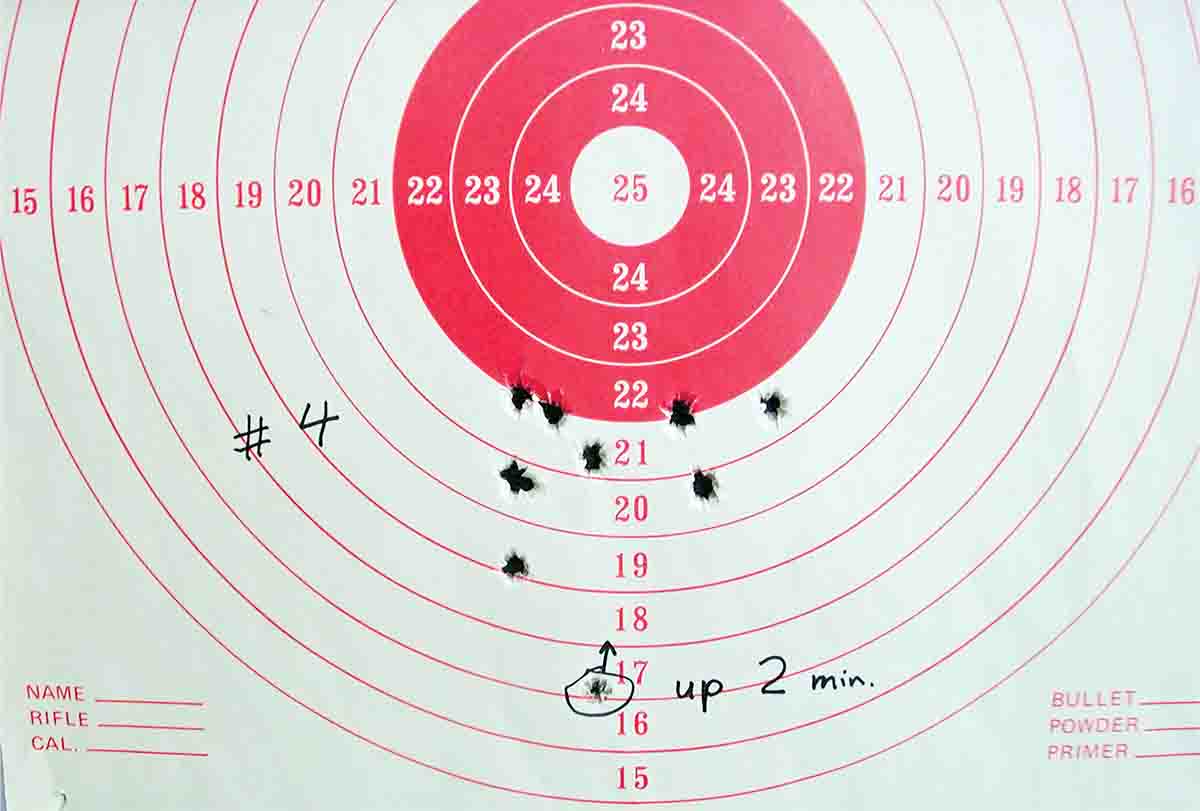
This 10-shot group was produced with the “No Slump” bullet.
time to test them. A real test is as many 10-shot groups as can be afforded in time and money. It takes a lot of personal investment to really learn what will win matches. It is questionable if the better ballistic coefficient actually makes a more accurate bullet.
The pointed No. 3 bullet “Turkey Killer” is the nose I used to win the BPCRS Championship in 1998 and 2001 and shot second overall in 2000 and 2002. For 12 years, some variation of this bullet was used to win 8 prize rifles shooting BPCR Silhouette. I shot the Oregon State BPCR Silhouette Championship in 2011 and again in 2012, winning the Scope Class using the “No Slump” bullet – I never shot it on paper. I also shot the Shiloh Invitational in 2013 and won the Scope Class with the same bullet; these were my last three matches.
I wouldn’t read much into these group sizes. Load development shooting hasn’t been done for seven years and I am very rusty. Since I am not competing, shooting groups and testing doesn’t seem very important at this time. Only one shot was put on the wrong target. I’m sure everybody agrees that one 10-shot group is not a test. The interesting thing is how much the ballistic coefficient of the bullet can affect the point of impact. These loads were also shot off a bench, which I have done very little of. All previous load development was done prone, off cross-sticks.
The LabRadar chronograph is pretty hard to run from the prone position because it is out at the end of the barrel and you can’t reach it, but it sure seems to work well and gives some fun figures to play with. The standard deviation was usually just under 10 with my old Oehler Research chronograph. I don’t know why this is different with the LabRadar.
It probably should be mentioned that since I stopped shooting 30 to 40 BPCR Silhouette matches a year and loading 3,000 to 4,000 rounds a year, I have had a lot of extra time. My game was BPCR Silhouette (with my wife Gayle as my spotter) and we shot a few black powder offhand Schuetzen matches each year at the Butte Gun Club Schuetzen house. I have used this extra time to make blank mould blocks and now have about a 10-year supply on hand, ready to fill your custom orders!






.jpg)


